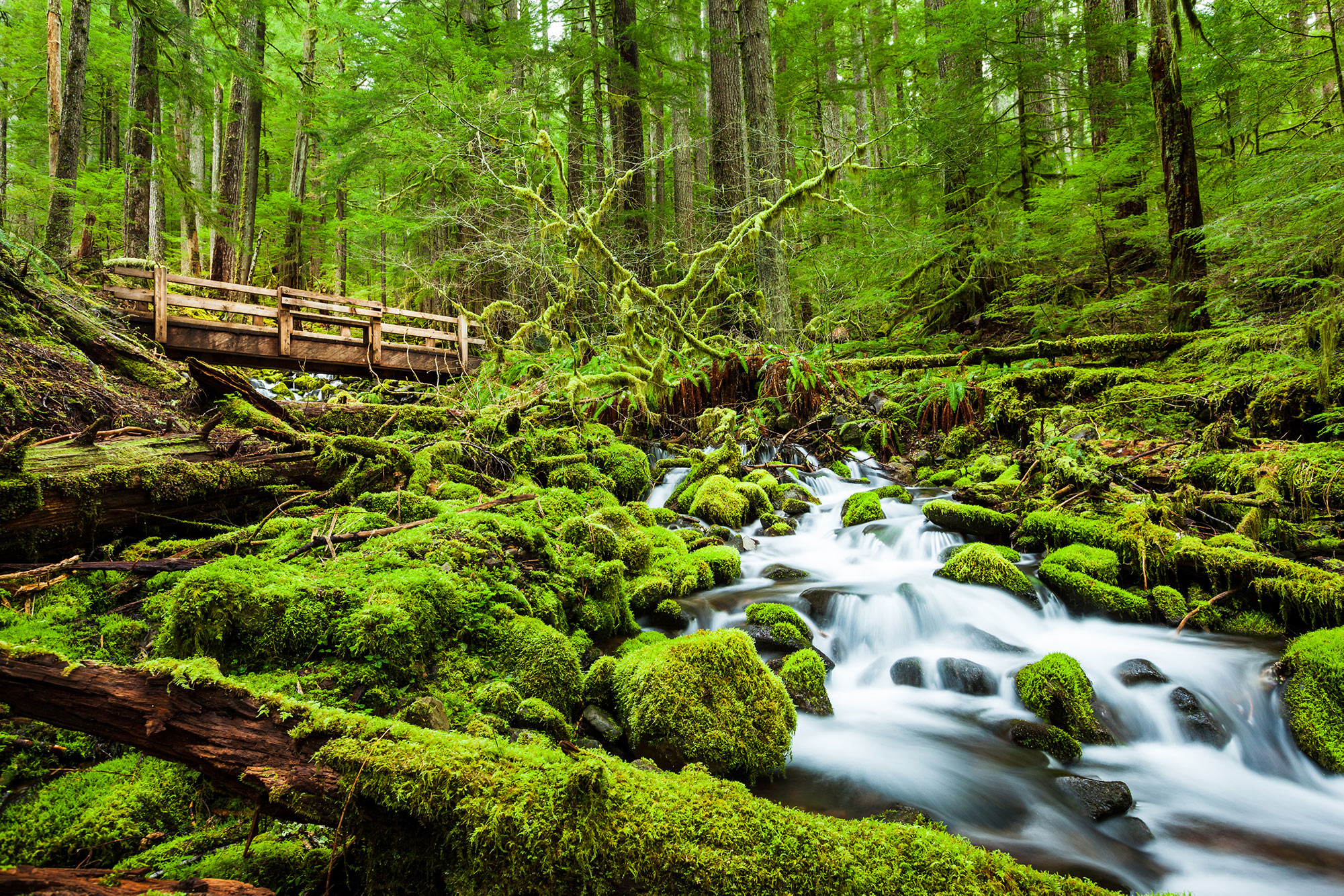Olympic National Park, a place of remarkable diversity, draws visitors with its majestic mountains, lush rainforests, and rugged coastline, all within close proximity. Planning a trip to such a sprawling and varied destination can feel like a significant undertaking, especially for those traveling from Seattle. This guide aims to simplify that process by providing well-structured itineraries for 3-day, 5-day, and 7-day explorations of this natural wonder, offering a blend of guidance and understanding for your journey.
Getting to Olympic National Park from Seattle: Your Journey Begins
Reaching Olympic National Park from Seattle involves several transportation options, each with its own advantages depending on your preferences and travel style.
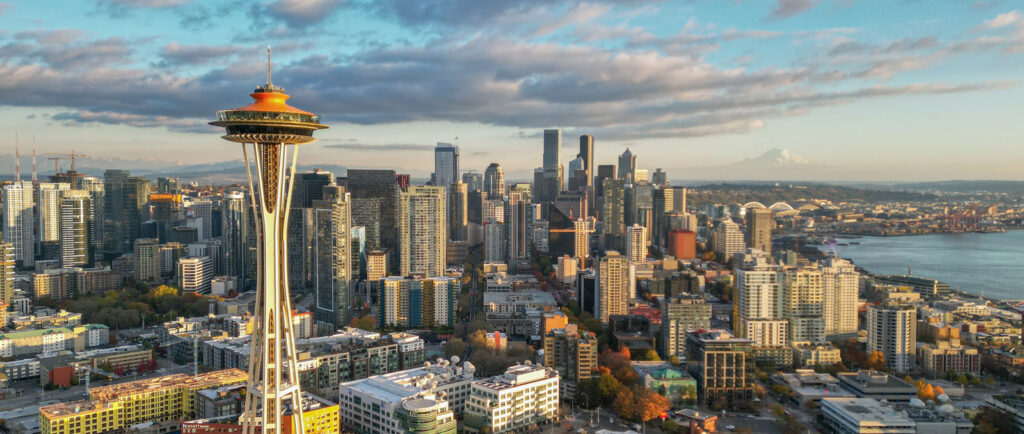
Transportation Options
By Ferry and Car: One of the most common and scenic ways to begin your Olympic adventure from Seattle is by taking a ferry across Puget Sound. Several ferry routes operated by Washington State Ferries connect Seattle to various points on the Olympic Peninsula. The Seattle-Bainbridge ferry, departing just a short walk from Pike Place Market, offers a quick 35-minute crossing to Bainbridge Island. From there, Highway 3 leads north towards the peninsula. Other options include the Edmonds-Kingston ferry, which is convenient for those located north of Seattle and sets you up for a drive across the Hood Canal Bridge. The Seattle-Bremerton ferry takes a longer 60-minute route and is a good choice for accessing the eastern side of the park near Hoodsport. Lastly, the Fauntleroy-Southworth ferry provides another route to the Kitsap Peninsula. Different ferry routes offer access to different parts of the park, which can influence the initial direction of your itinerary. If you plan to bring your vehicle, remember to factor in the time required for loading and unloading on the ferry. The ferry ride itself can be quite pleasant, offering views of the Seattle skyline and opportunities to spot marine life like orcas or porpoises. Once you reach the peninsula, driving distances from the ferry terminals to various park entrances and key areas will vary. For instance, Port Angeles, a gateway to the northern part of the park, is about a 1.5 to 2-hour drive from Kingston after disembarking the ferry.
Driving Directly: An alternative to the ferry is to drive directly from Seattle south through Tacoma and Olympia before heading north on Highway 101, the main road that circles the Olympic Peninsula. This route avoids ferry travel but can be longer depending on traffic conditions in the Seattle and Tacoma areas and your specific destination within the park.
By Bus: For those preferring not to drive, several bus services provide transportation from Seattle to the Olympic Peninsula. Companies like Greyhound USA, Dungeness Line, and Clallam Transit operate routes connecting Seattle to towns such as Port Angeles. Some of these bus routes may include a ferry journey as part of the overall trip. Travel times for bus journeys typically range from 3 to 5 hours to reach areas near the park’s northern entrance. Clallam Transit’s “The Straight Shot” route is a direct option from Seattle to Port Angeles that includes a ferry ride and takes approximately three hours.
Organized Tours: Another option, particularly for those with limited time or who prefer a hassle-free experience, is to join an organized day tour from Seattle. These tours typically handle all transportation and itinerary planning, allowing you to relax and enjoy the sights.
Travel Time Considerations
Estimated travel times from Seattle to key areas of Olympic National Park vary depending on the chosen mode of transportation and your final destination. To reach Port Angeles, the gateway to the northern part of the park, allow approximately 2.5 to 4 hours, whether you choose to drive directly or take a ferry and then drive. Traveling to Forks, which provides access to the west coast and the Hoh Rainforest, will take longer, typically around 4 to 5 hours of driving from Seattle, potentially involving a ferry. The southern region of the park, around Lake Quinault, is also about a 3 to 4-hour drive from Seattle. It is important to remember that driving times within the park itself can also be considerable due to its size and the varied terrain, with winding roads and speed limits to consider.
Initial Planning Tips
When planning an Olympic National Park Itinerary from Seattle, it is advisable to first consider your preferred method of transportation and the time of year you intend to visit. Booking ferry tickets in advance, especially if you are traveling with a vehicle, is a good idea to avoid potential delays, particularly during peak season. It is also helpful to decide on a general region of the park you wish to focus on initially, based on the length of your trip and your chosen mode of transport. For example, taking the Bainbridge ferry makes the northern part of the peninsula and areas like Hurricane Ridge and Lake Crescent more readily accessible.
The data indicates a significant reliance on personal vehicles for exploring Olympic National Park, likely due to its expansive nature and the distance between various points of interest. However, viable alternatives such as ferries and buses offer options for those who prefer not to drive the entire distance. The choice of ferry route has a direct impact on the initial areas of the park that become most easily accessible, which in turn influences the logical flow of a multi-day itinerary. Visitors should be aware that travel involves not just the journey from Seattle to the Olympic Peninsula, but also considerable driving within the park to experience its different regions. This underscores the need for thoughtful itinerary planning and potentially considering accommodations in different locations to minimize driving time.
Your 3-Day Olympic National Park Itinerary: A Taste of the Wild
This 3-day itinerary is crafted to provide a snapshot of Olympic National Park’s diverse ecosystems for visitors with a shorter timeframe. It balances the iconic mountain views, the serene beauty of a glacial lake, and the unique experience of a temperate rainforest and rugged coastline.
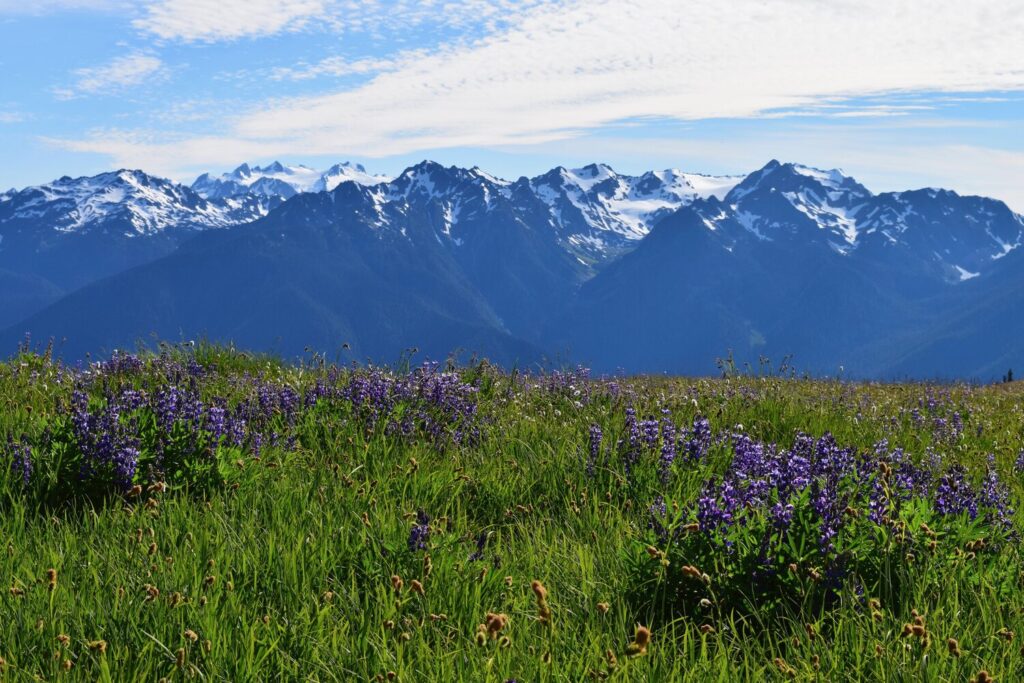
Day 1: Majestic Mountains and Pristine Lake
Begin your first day by traveling from Seattle to Port Angeles, typically via ferry and car, a journey that takes approximately 3 to 4 hours. Once in Port Angeles, head directly to Hurricane Ridge. The drive up the 18-mile Hurricane Ridge Road is a scenic experience in itself, with a noticeable gain in elevation that culminates in breathtaking panoramic views of the Olympic Mountains and, on clear days, the Strait of Juan de Fuca. The Hurricane Ridge Visitor Center offers valuable resources such as maps and information, and the surrounding area is often frequented by wildlife like deer and marmots. For an easy introduction to the area, take the paved Cirque Rim Trail, a half-mile loop offering stunning vistas. Alternatively, the short but somewhat steep 0.2-mile trail to Sunrise Point rewards with sweeping views. Depending on the time of year, you might even encounter blooming wildflowers in the meadows. If your visit falls during the winter months, Hurricane Ridge transforms into a winter wonderland, offering opportunities for snowshoeing and cross-country skiing.
In the late afternoon, drive west along Highway 101 for about 20 miles to discover the beauty of Lake Crescent. This glacially carved lake is known for its strikingly clear turquoise waters. Consider a visit to the historic Lake Crescent Lodge, a beautiful structure with stunning lake views. From the lodge area, embark on the easy and picturesque 1.7-mile roundtrip hike to Marymere Falls, a lovely waterfall nestled in the lush forest. For those seeking a more challenging experience, the Mount Storm King Trail offers incredible overlooks of Lake Crescent, but be aware that this is a strenuous 4.1-mile hike with significant elevation gain. If time and weather permit, a refreshing swim in the lake or renting a kayak or canoe can be a delightful way to end the day. In the evening, check into your accommodation in Port Angeles and enjoy a well-deserved dinner.
Day 2: Wild Coast and Lush Rainforest
On your second day, drive west from Port Angeles towards Forks, a journey of approximately 1.5 to 2 hours. Forks serves as a central point for exploring the park’s western side, including the dramatic coastline and the renowned Hoh Rainforest. Your first stop should be Rialto Beach. Park in the designated area and walk onto the beach, where you will be greeted by towering sea stacks and large driftwood logs. A popular activity here is to walk north along the beach towards Hole-in-the-Wall, a striking sea arch. Access to the arch and the tide pools surrounding it is dependent on the tide, so be sure to check tide charts beforehand. Low tide reveals a fascinating array of marine life in the rocky pools.
In the afternoon, drive east on the Upper Hoh Road for about 13 miles to immerse yourself in the Hoh Rainforest. This is one of the finest remaining examples of temperate rainforest in the United States, characterized by its incredibly lush vegetation and moss-draped trees. Begin your exploration at the Hoh Rainforest Visitor Center, where you can learn more about this unique ecosystem. From the visitor center, take the short and enchanting Hall of Mosses Trail, an 0.8-mile loop that takes you through a grove of maple trees covered in vibrant club moss. Another recommended trail is the Spruce Nature Trail, a 1.2-mile loop that offers a similar rainforest experience but often with fewer people. Given that the Hoh receives a significant amount of rainfall annually (around 140 inches), it is wise to bring a raincoat. Spend the evening in Forks, where you will find various lodging and dining options.
Day 3: Southern Charm or Valley Serenity & Departure
For your final day, you have a choice between exploring the southern part of the park around Lake Quinault or discovering the serene Sol Duc Valley to the north, depending on your interests and your route back to Seattle.
Option 1: Exploring Lake Quinault (South): If you choose this option, drive south from Forks for approximately 1.5 to 2 hours to reach the Lake Quinault area. The Quinault Rainforest, located here, shares similarities with the Hoh but often experiences fewer visitors. Be sure to visit the world’s largest Sitka Spruce tree, a truly impressive sight. A scenic drive around the Lake Quinault Rain Forest Loop offers numerous opportunities to stop at viewpoints and trailheads. Consider a short and easy hike on the Maple Glade Nature Trail near the Quinault Rain Forest Ranger Station. You might also want to hike to easily accessible waterfalls such as Merriman Falls or Willaby Falls.
Option 2: Discovering Sol Duc Valley (North): Alternatively, you can drive from Forks back towards the north, heading to the Sol Duc Valley. The drive from Lake Crescent to Sol Duc is about an hour, so adjust your route accordingly from Forks. The main attraction here is Sol Duc Falls, a stunning waterfall where the river cascades into a slot canyon. The hike to the falls is a moderate 1.6-mile roundtrip through a temperate rainforest. If you have time, consider a relaxing soak in the Sol Duc Hot Springs, although be sure to check for seasonal closures. A short walk on the Ancient Groves Trail provides an opportunity to admire some of the area’s old-growth trees.
Afternoon: From either Lake Quinault or the Sol Duc area, begin your drive back to Seattle. The drive from Lake Quinault takes approximately 3 to 4 hours, while the journey from the Sol Duc area will take around 4 to 5 hours, potentially involving a ferry ride depending on your chosen route.
This 3-day itinerary offers a glimpse into the diverse natural beauty of Olympic National Park, but the vastness of the park means that some choices must be made due to time constraints. The time of year can influence the availability of certain activities, such as access to hot springs or driving conditions on mountain roads. Even with a short trip, visitors can experience the unique character of the park’s mountains, rainforest, and coast, though it requires efficient planning and accepting that not all areas can be explored in such a brief period.
Expanding Your Exploration: The 5-Day Olympic National Park Itinerary: Deeper into the Peninsula
The 5-day itinerary builds upon the 3-day plan, allowing for a more relaxed pace and the inclusion of the remote northwest corner of the park. This extended trip provides the opportunity to delve further into the diverse landscapes and potentially enjoy some longer hikes.
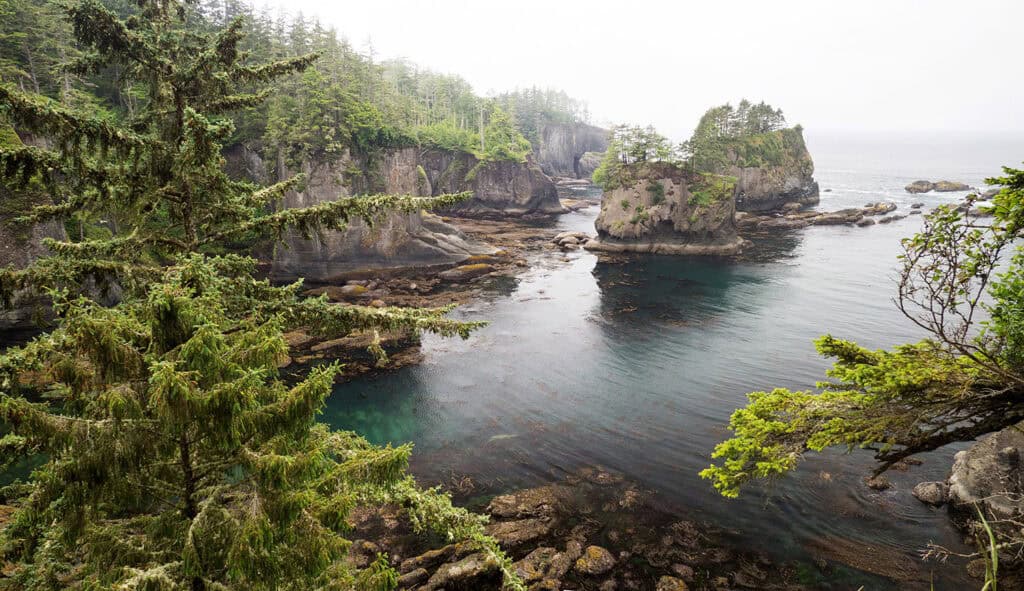
Days 1 & 2
Follow the Day 1 and Day 2 itineraries from the 3-day plan. With the extra time, consider adding shorter hikes at Hurricane Ridge or spending more time exploring the tide pools at Rialto Beach. You might also choose to linger longer at Lake Crescent, perhaps enjoying a picnic lunch by the shore.
Day 3: Journey to the Northwest Tip: Cape Flattery & Neah Bay
On your third day, drive from Forks to Neah Bay, the home of the Makah Tribe, a journey of approximately 1.5 hours. Neah Bay is the gateway to Cape Flattery, the northwesternmost point of the contiguous United States. Before heading to the cape, remember to purchase a Makah Recreation Pass in Neah Bay, which currently costs $20. The Cape Flattery Trail is an easy and incredibly scenic 1.2-mile roundtrip boardwalk trail that leads to several overlooks offering breathtaking views of the Pacific Ocean, dramatic sea stacks, and Tatoosh Island just offshore. Take your time at each viewpoint to soak in the stunning vistas and feel the power of the ocean. Nearby, you can also visit Hobuck Beach, which is located on tribal lands. Consider spending some time at the Makah Cultural & Research Center Museum in Neah Bay to learn about the rich history, traditions, and artifacts of the Makah people. In the evening, return to Forks for dinner and another overnight stay.
Day 4: Southern Exposure: Lake Quinault and its Rainforest
On your fourth day, drive south from Forks to the Lake Quinault area, a drive of about 1.5 to 2 hours. Take the scenic Lake Quinault Rain Forest Loop Drive, a 30-mile route that encircles the lake and offers numerous opportunities to stop at viewpoints and trailheads. A recommended short hike is the easy half-mile Maple Glade Nature Trail, located near the Quinault Rain Forest Ranger Station, which takes you through a grove of moss-covered bigleaf maple trees. Make sure to visit the world’s largest Sitka Spruce tree, which stands impressively at over 191 feet tall. The Quinault area is also known for its waterfalls; consider a hike to Merriman Falls, located right along South Shore Road, or the slightly more remote Willaby Falls. If you are looking for a special experience, consider spending the night at the historic Lake Quinault Lodge, a beautiful building with a rich history and stunning lake views.
Day 5: Eastern Serenity and Return to Seattle
On your final day, drive from the Lake Quinault area towards the eastern side of the park, perhaps to the Staircase region or the Lake Cushman area, a drive of approximately 1 to 1.5 hours. The Staircase region, located near Hoodsport, is known for its lush, heavily forested trails along the Skokomish River. A popular hike here is the easy 2-mile Staircase Rapids Loop Trail, which takes you through a beautiful rainforest with towering Douglas firs and hanging moss. Alternatively, you could head to the Lake Cushman Overlook for beautiful views of the lake and surrounding mountains. After enjoying some time in the eastern part of the park, begin your drive back to Seattle from the Hoodsport area, which typically takes around 2 to 3 hours.
The 5-day itinerary allows for a better appreciation of the geographical spread of Olympic National Park, balancing popular attractions with the chance to explore more remote areas like Cape Flattery. Allocating a full day to the northwest corner emphasizes the unique cultural heritage of the Makah Tribe and the stunning coastal scenery. With five days, visitors can gain a more complete understanding of the park’s diverse ecosystems and potentially enjoy a slightly more relaxed pace compared to the 3-day option.
The Full Olympic Experience: The 7-Day Olympic National Park Itinerary: Unveiling Every Corner
The 7-day itinerary provides the most immersive experience in Olympic National Park, allowing for an in-depth exploration of all its distinct regions, with ample time for longer hikes, relaxation, and optional activities.
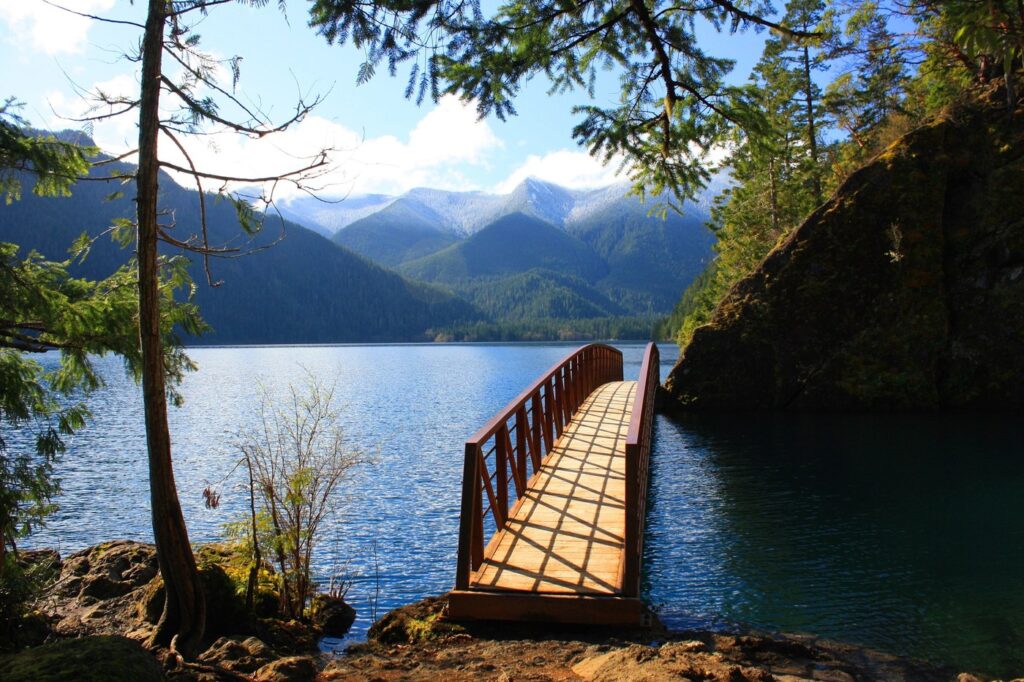
Days 1 & 2: Northern Delights
Dedicate the first two days to thoroughly exploring the northern region, including Hurricane Ridge and Lake Crescent.
Day 1: Follow a similar itinerary to Day 1 of the 3-day plan, but consider adding longer hikes at Hurricane Ridge, such as the 3.4-mile roundtrip Hurricane Hill via Hurricane Ridge trail, for even more spectacular alpine views. Allow ample time for exploring different viewpoints around Lake Crescent, and perhaps rent a kayak or canoe for a leisurely paddle on its pristine waters.
Day 2: Explore more of the trails around Lake Crescent. Hike the 2.4-mile roundtrip Devil’s Punchbowl via Spruce Railroad Trail, which offers beautiful lake views and leads to a popular swimming spot. Consider taking a narrated scenic boat cruise on the lake for a different perspective of its beauty and history. You could also explore the lightly traveled 13-mile Mount Muller Loop, known for its ridge views (note: this is a more strenuous hike).
Day 3: Northwestern Adventure
Dedicate a full day to the Cape Flattery and Shi Shi Beach area. Spend more time at the Makah Cultural & Research Center in Neah Bay to deepen your understanding of the Makah Tribe’s history and culture. If the weather is favorable and you are prepared for a longer and potentially muddy hike, dedicate a significant portion of the day to hiking the approximately 8-mile roundtrip to the Point of Arches on Shi Shi Beach. This stunning beach is considered one of the most epic on the Washington coastline, featuring dramatic sea stacks and tide pools. Remember that this area requires a Makah Recreation Pass.
Day 4: Coastal Exploration
Focus your fourth day on exploring the beaches south of La Push. Visit First Beach in La Push, known for its easy access and opportunities for surfing and whale watching during migration seasons. Explore Second Beach, often considered the prettiest in the region, with its impressive sea stacks and rocky tide pools scattered throughout. Hike to Third Beach for a more secluded coastal experience; the 1.5-mile access trail through a second-growth forest rewards you with a sprawling coastline that is often less crowded. Depending on the season, consider a guided whale watching tour that may depart from La Push, offering a chance to see these magnificent creatures up close.
Day 5: Immersion in the Rainforest
Dedicate a full day to exploring the Hoh Rainforest and potentially the nearby Queets Rainforest. Hike longer trails in the Hoh beyond the popular Hall of Mosses and Spruce Nature Trails. Consider venturing further on the Hoh River Trail, even if you don’t hike the entire 17 miles to Glacier Meadows. Popular turn-around points along this trail include the First River access (0.9 miles one way) or Mineral Creek Falls (2.7 miles one way). For a quieter and more solitary rainforest experience, consider a visit to the Queets Rain Forest, located south of the Hoh. While it receives fewer visitors, it offers a similar lush environment and the chance to see giant trees.
Day 6: Choose Your Own Adventure: Sol Duc or Eastern Trails
On your sixth day, you have the flexibility to choose between the relaxing Sol Duc Valley or further exploration of the eastern wilderness.
Option 1: Sol Duc Valley Relaxation and Exploration: Spend a full day hiking the various trails in the Sol Duc Valley. Some trails lead to backcountry lakes like those in the Seven Lakes Basin, which require a wilderness permit for overnight stays. Indulge in a longer and more therapeutic soak at the Sol Duc Hot Springs Resort, enjoying the natural mineral waters.
Option 2: Eastern Wilderness Exploration: Explore more challenging trails in the Staircase area, such as the Flapjack Lakes Trail (a longer, more strenuous hike), or venture further into the Lake Cushman region for more hiking opportunities and potential water activities on the lake. If you are considering overnight backpacking trips in these areas, make sure to research and obtain the necessary wilderness permits in advance.
Day 7: Scenic Departure and Optional Stops
Begin your drive back towards Seattle, allowing ample time for potential scenic stops along the way. Consider a visit to Port Townsend, a charming Victorian seaport town located on the northeastern tip of the Olympic Peninsula, offering unique shops, art galleries, and historical sites. You could also stop in Sequim, known as the lavender capital of the Pacific Northwest (best visited in summer), and explore the Dungeness National Wildlife Refuge, home to the longest natural sand spit in the United States and the New Dungeness Lighthouse. If you are a cycling enthusiast, consider exploring a section of the Olympic Discovery Trail, a scenic non-motorized path that spans much of the Olympic Peninsula. Continue your journey back to Seattle via your preferred route, whether it’s taking a ferry from Bainbridge or Kingston, or driving south and then east through Tacoma.
A full week in Olympic National Park allows visitors to truly appreciate the unique character of each ecosystem, from the high alpine meadows to the ancient rainforests and the rugged Pacific coastline. This extended duration provides the most rewarding experience, offering flexibility to adjust plans based on weather or personal interests and opening up opportunities for more time-intensive activities like longer hikes and potentially backpacking trips with the necessary permits.
Frequently Asked Questions (FAQs):
- Q1: What is the best time to visit Olympic National Park?
- The best time to visit Olympic National Park depends on your priorities. Summer (July-August) offers the warmest and driest weather, making it ideal for hiking and accessing all areas of the park, including Hurricane Ridge. However, this is also the busiest time of year. Spring (April-June) and fall (September-October) provide fewer crowds and beautiful scenery, with wildflowers blooming in spring and fall colors emerging. Be prepared for rain during these seasons. Winter (November-March) brings snow to the higher elevations, offering opportunities for snowshoeing and cross-country skiing at Hurricane Ridge, but some roads, including Hurricane Ridge Road, may be closed due to snow. The coastal areas and rainforests remain generally accessible year-round, though rain is common.
- Q2: How much does it cost to enter Olympic National Park?
- As of 2025, the entrance fee for a private, non-commercial vehicle is $30, which is valid for seven consecutive days and covers all occupants of the vehicle. For individuals entering on a motorcycle, the fee is $25, and for those entering on foot or bicycle, the fee is $15 per person, also valid for seven days. Frequent visitors have the option to purchase an annual Olympic National Park pass for $55. The America the Beautiful Pass, priced at $80, provides access to all national parks and federal recreational lands for one year. It is important to note that cash is not accepted for entrance fees within the park; credit or debit cards are required. Several days throughout the year are designated as fee-free days when entrance to all national parks is free to everyone.
- Q3: Do I need a car to explore Olympic National Park?
- Having a car is strongly recommended for exploring Olympic National Park. The park is vast and its different regions—mountains, rainforest, coast—are spread out, requiring significant driving to access them. While there are some public transportation options available, such as limited bus services connecting some of the larger towns on the Olympic Peninsula, their coverage within the park itself is minimal. A personal vehicle provides the most flexibility and allows you to reach trailheads, viewpoints, and other attractions at your own pace and convenience.
- Q4: Where should I stay in Olympic National Park?
- Olympic National Park and the surrounding areas offer a variety of accommodation options to suit different preferences and budgets. Inside the park, you can find historic lodges such as Lake Crescent Lodge, Kalaloch Lodge, Lake Quinault Lodge, and Sol Duc Hot Springs Resort. Reservations for these lodges are highly recommended, especially during the peak season. The park also has numerous campgrounds located in various regions, including Hoh, Kalaloch, Mora, Sol Duc, and Hurricane Ridge. Reservations for campgrounds are often needed, particularly in the summer months. Outside the park boundaries, gateway towns like Port Angeles and Forks offer a wide selection of hotels, motels, and vacation rentals. The Lake Quinault area also has lodging options available.
- Q5: Are there any permits required for hiking or backpacking in Olympic National Park?
- Yes, while a general park entrance pass is required for entry, wilderness permits are necessary for any overnight stays in the backcountry of Olympic National Park. These permits can be reserved in advance through the website Recreation.gov, and there is a fee associated with them. Additionally, if you plan to visit Cape Flattery or Shi Shi Beach, which are located on the Makah Reservation, you will need to purchase a Makah Recreation Pass in the town of Neah Bay.
Conclusion: Your Olympic Adventure Awaits
Olympic National Park stands as a testament to the incredible natural beauty and ecological diversity of the Pacific Northwest. From the towering, glacier-capped Olympic Mountains to the ancient, moss-draped rainforests and the wild, wave-swept Pacific coastline, the park offers an unparalleled range of experiences for nature lovers and adventurers alike. These itineraries, whether you have a short 3-day weekend or a full 7-day week, are designed to serve as a helpful starting point for planning your own unforgettable journey from Seattle. Embrace the opportunity to witness the splendor of this remarkable place, and may your travels be safe and filled with memorable moments in the heart of Olympic National Park.
Content creator and writer for multiple websites including All About Glamping, Fit Living Lifestyle, and Live Dream Discover. A full-time traveler who has spoken at various travel conferences around the world.

